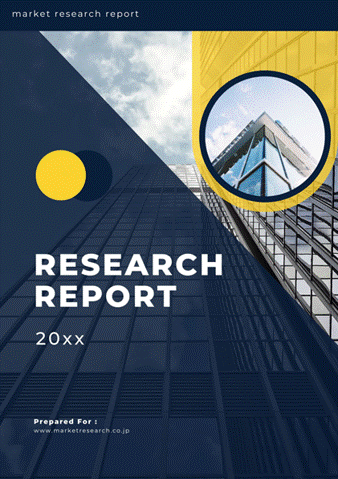 | • レポートコード:MRC2202A005 • 出版社/出版日:Mordor Intelligence / 2022年1月28日 • レポート形態:英文、PDF、111ページ • 納品方法:Eメール(受注後2-3営業日) • 産業分類:医療 |
| Single User | ¥703,000 (USD4,750) | ▷ お問い合わせ |
| Team User | ¥962,000 (USD6,500) | ▷ お問い合わせ |
| Corporate License | ¥1,295,000 (USD8,750) | ▷ お問い合わせ |
• お支払方法:銀行振込(納品後、ご請求書送付)
レポート概要
| Mordor Intelligence社は、世界のラベルフリー検出(LFD)市場規模が年平均8.5%成長すると予想しています。本書では、ラベルフリー検出(LFD)の世界市場について調査し、イントロダクション、調査手法、エグゼクティブサマリー、市場動向、製品別(消耗品、機器)分析、技術別(質量分析、表面プラズモン共鳴(SPR)、バイオレイヤー干渉法、等温滴定カロリメトリー、示差走査熱量測定、その他)分析、用途別(結合反応速度、結合熱力、内因性受容体検出、ヒット確認、リードジェネレーション、その他)分析、エンドユーザー別(製薬・バイオテクノロジー企業、学術研究機関、その他)分析、地域別(北米、ヨーロッパ、アジア太平洋、中東・アフリカ、南米)分析、競争状況、市場機会/将来の見通しなどを掲載しています。 ・イントロダクション ・調査手法 ・エグゼクティブサマリー ・市場動向 ・世界のラベルフリー検出(LFD)市場規模:製品別(消耗品、機器) ・世界のラベルフリー検出(LFD)市場規模:技術別(質量分析、表面プラズモン共鳴(SPR)、バイオレイヤー干渉法、等温滴定カロリメトリー、示差走査熱量測定、その他) ・世界のラベルフリー検出(LFD)市場規模:用途別(結合反応速度、結合熱力、内因性受容体検出、ヒット確認、リードジェネレーション、その他) ・世界のラベルフリー検出(LFD)市場規模:エンドユーザー別(製薬・バイオテクノロジー企業、学術研究機関、その他) ・世界のラベルフリー検出(LFD)市場規模:地域別(北米、ヨーロッパ、アジア太平洋、中東・アフリカ、南米) ・競争状況(Ametek Inc.、Corning Incorporated、Cytiva (GE Healthcare)、Horiba Ltd.、Malvern Panalytical、PerkinElmer Inc.、Shimadzu Corporation、Thermo Fisher Scientific、Fluidic Analytics) ・市場機会/将来の見通し |
The Global Label-Free Detection (LFD) Market is expected to register a CAGR of 8.5% during the forecast period. The main advantage in LFD techniques is that more direct information can be acquired as the method uses only native proteins and ligands. Innovations in LFD techniques include modification of mass spectrometry to develop surface-enhanced laser desorption/ionization (SELDI) time of flight (TOF)- mass spectrometry (MS) which is an innovative approach that offers on-chip purification of the proteins of interest and subsequent ionization of the retained molecules to be detected. Other innovations in LFD techniques include the modification of surface plasmon resonance (SPR) to develop Localized Surface Plasmon Resonance (LSPR) which provides advantages like lower fabrication costs and higher sensitivity. As per Pfizer Inc, annual report 2019, Pfizer’s expenditures on research and development (R&D) in 2019 was around USD 8.65 billion. This was an increase compared to 2018 which was about USD 8.1 billion. Furthermore, with the introduction of new innovations in the label-free detection technologies the market is expected to experience significant growth.
Key Market Trends
Surface Plasmon Resonance (SPR) Segment is Expected to Hold Largest Share of Global Label-Free Detection (LFD) Market
- Based on technology used, surface plasmon resonance (SPR) technology segment is expected to hold significant market share in the global label-free detection market due to its wide application range and compatibility with a wide range of biomolecules. However, the bio-layer interferometry segment is expected to grow at the fastest rate over the forecast period.
- According to the National Institutes for Health (NIH), total clinical research funding by the National Institutes for Health (NIH) in 2017, 2018 and 2019 was USD 12,695 million, USD 13,870 million, and USD 15,023 million. As clinical research funding increasing which will boost the market in the near future. Furthermore, interferometry provides advantages like less fluctuation in the refractive index of the samples being tested and microfluidic-free nature of bio-layer interferometry label-free detection systems. Hence, owing to above all factors the segment is expected to show growth over the forecast period.
North America Region Holds the Largest Market Share of Label-Free Detection (LFD) Market
North America dominates the global label-free detection market due to technological advancement and high government funding in the region. Also, increasing prevalence of disease and the growth in drug discovery programs in the region. According to the National Clinical Trials Registry (NCT), in 2019, the number of registered clinical studies alone in the United States was around 108,790. Furthermore, partnerships between pharmaceutical companies and academic institutes and the presence of several pharmaceutical and biotechnological companies will also augment the growth of the market.
Competitive Landscape
The Label-Free Detection (LFD) Market is fragmented competitive and consists of several major players. The companies are implementing certain strategic initiatives such as merger, new product launch, acquisition and partnerships that help them in strengthening their market position. Further, these leaders have products for all the end users, a strong grographical presence and also focusing on product innovations.
Additional Benefits:
- The market estimate (ME) sheet in Excel format
- 3 months of analyst support
1 INTRODUCTION
1.1 Study Deliverables
1.2 Study Assumptions
1.3 Scope of the Study
2 RESEARCH METHODOLOGY
3 EXECUTIVE SUMMARY
4 MARKET DYNAMICS
4.1 Market Overview
4.2 Market Drivers
4.2.1 Increasing R&D Activities Through Research Partnerships Between Pharmaceutical Companies and Academic Institutes
4.2.2 Innovations in Label-free Detection Technologies
4.3 Market Restraints
4.3.1 High Cost of Instruments
4.3.2 Issues in Sensitivty and Throughput
4.4 Porter’s Five Force Analysis
4.4.1 Threat of New Entrants
4.4.2 Bargaining Power of Buyers/Consumers
4.4.3 Bargaining Power of Suppliers
4.4.4 Threat of Substitute Products
4.4.5 Intensity of Competitive Rivalry
5 MARKET SEGMENTATION
5.1 By Product
5.1.1 Consumables
5.1.1.1 Biosensor Chips
5.1.1.2 Microplates
5.1.2 Instruments
5.2 By Technology
5.2.1 Mass Spectrometry
5.2.2 Surface Plasmon Resonance (SPR)
5.2.3 Bio-Layer Interferometry
5.2.4 Isothermal Titration Calorimetry
5.2.5 Differential Scanning Calorimetry
5.2.6 Other Lfd Technologies
5.3 By Application
5.3.1 Binding Kinetics
5.3.2 Binding Thermodynamics
5.3.3 Endogenous Receptor Detection
5.3.4 Hit Confirmation
5.3.5 Lead Generation
5.3.6 Other Applications
5.4 By End-User
5.4.1 Pharmaceutical & Biotechnology Companies
5.4.2 Academic & Research Institutes
5.4.3 Other End-Users
5.5 Geography
5.5.1 North America
5.5.1.1 United States
5.5.1.2 Canada
5.5.1.3 Mexico
5.5.2 Europe
5.5.2.1 Germany
5.5.2.2 United Kingdom
5.5.2.3 France
5.5.2.4 Italy
5.5.2.5 Spain
5.5.2.6 Rest of Europe
5.5.3 Asia-Pacific
5.5.3.1 China
5.5.3.2 Japan
5.5.3.3 India
5.5.3.4 Australia
5.5.3.5 South Korea
5.5.3.6 Rest of Asia-Pacific
5.5.4 Middle-East and Africa
5.5.4.1 GCC
5.5.4.2 South Africa
5.5.4.3 Rest of Middle-East and Africa
5.5.5 South America
5.5.5.1 Brazil
5.5.5.2 Argentina
5.5.5.3 Rest of South America
6 COMPETITIVE LANDSCAPE
6.1 Company Profiles
6.1.1 Ametek Inc.
6.1.2 Corning Incorporated
6.1.3 Cytiva (GE Healthcare)
6.1.4 Horiba Ltd.
6.1.5 Malvern Panalytical
6.1.6 PerkinElmer Inc.
6.1.7 Shimadzu Corporation
6.1.8 Thermo Fisher Scientific
6.1.9 Fluidic Analytics
7 MARKET OPPORTUNITIES AND FUTURE TRENDS